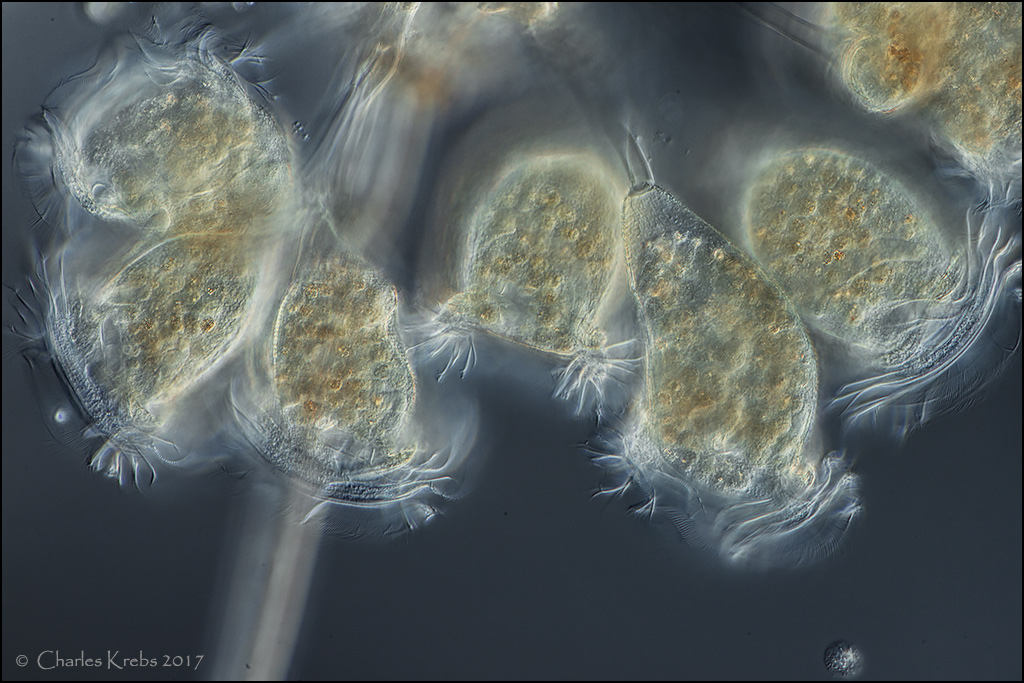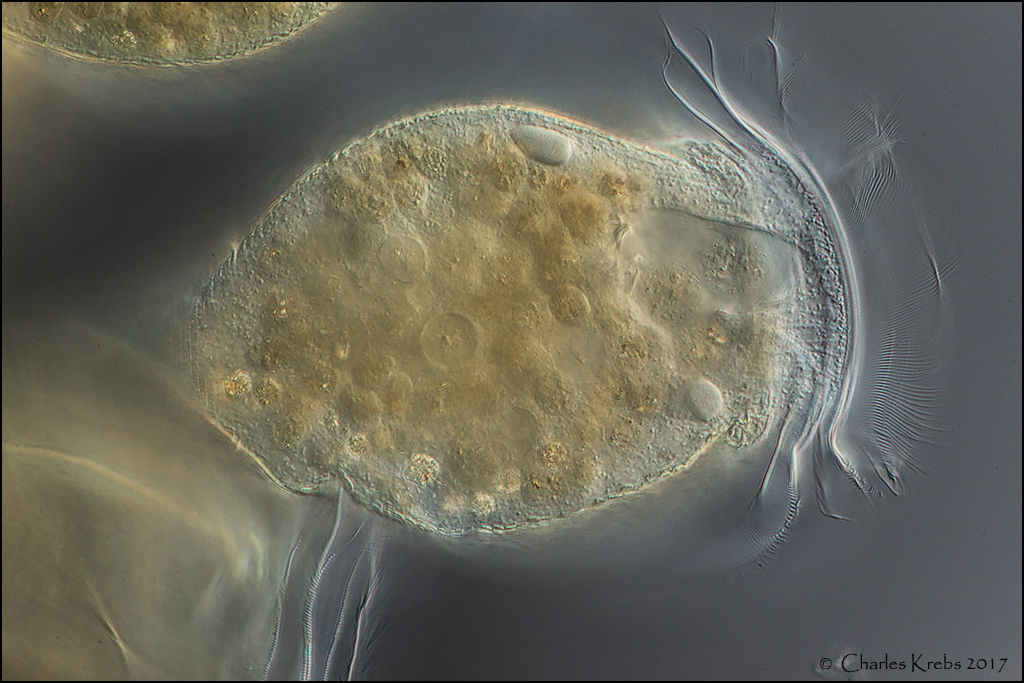

Moderators: rjlittlefield, ChrisR, Chris S., Pau


Here I tried to link relevant kinds of setups:WalterD wrote:...sure there has been a thread..
Pau sent you a relevant thread. A lot will depend upon the construction of the lighting system on your microscope. I've used several methods with different scopes and all worked OK. One involved a bifurcated FO light pipe with one end of the "Y" in an illuminator and the other up against the face of a speedlight. Another was using a beam splitter at 45 degrees with the flash off to the side.WalterD wrote:Amazing detail! I myself 'd like to learn how to use flash combined with dic as well, sure there has been a thread..

Uh-oh! I can see how the picture I just posted above could lead to confusion. In that image the LED used for continuous illumination was removed in order to see the flash tube more clearly. The BHS lamphouse does not have a reflector. What looks very much like a reflector in that picture is actually the large collector lens. The small pictures below shows a K2 LED mounted directly behind the flash tube. Sorry for the confusion.Pau wrote:Charles, so now I see that you use the lamphouse mirror, where is the LED lamp for continuous illumination?


I think you will be surprised how many new opportunuties this allows. It's not that necessary with brightfield or even darkfield where you can often get a very high shutter speed. But DIC soaks up so much light that even a live diatom cruising around, or a leisurely amoeba can end up as a blurry picture without flash (unless you are willing to crank up the ISO to extreme levels).WalterD wrote:For moving planktonic microfauna objects this will add a new dimension to my hobby (and allow me to make pictures without stacking for a change).
The tube is from a Vivitar 283. In those the front flash panel has a rather strong yellowish tint, so I suppose that is where any UV filtering takes place instead of the tube. (Unlike some "studio" flash, I really would not think that it is common for camera speed-lights to have UV filtered tubes). It would be quite easy to insert UV filtration somewhere in the lighting path if desired.Pau wrote:Oops! I misunderstood the images. Zeiss halogen lamps have a concave mirror and I remembered well the LED in your setup
In fact I'm now reworking my Lego setup and I'm tempted to copy yours, so about safety:
- Do you know if the bare tube is UV emission shielded?
- I see the wires contacts too exposed, for me it would be too dangerous although after 10 years you're used to avoid the danger!